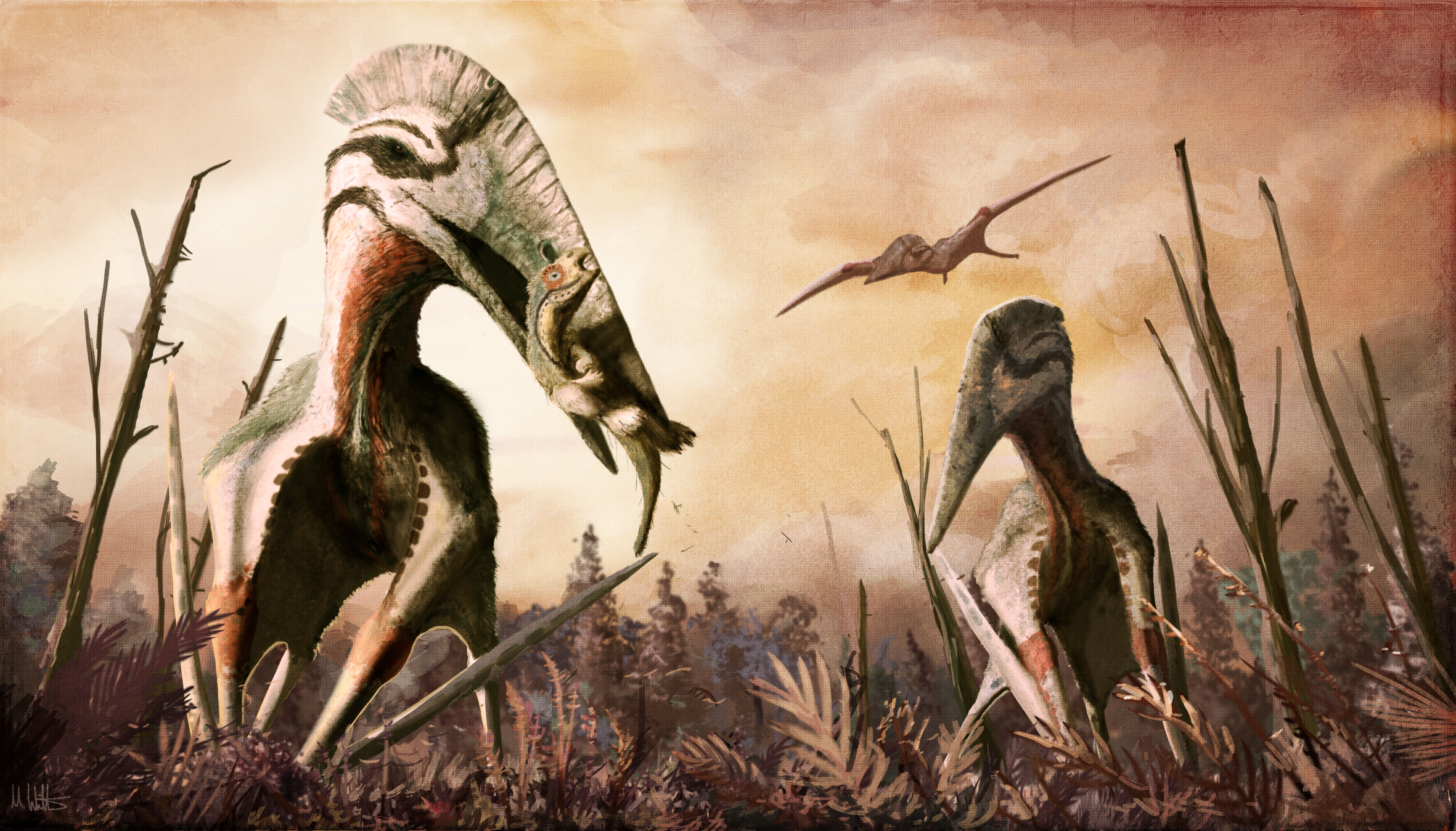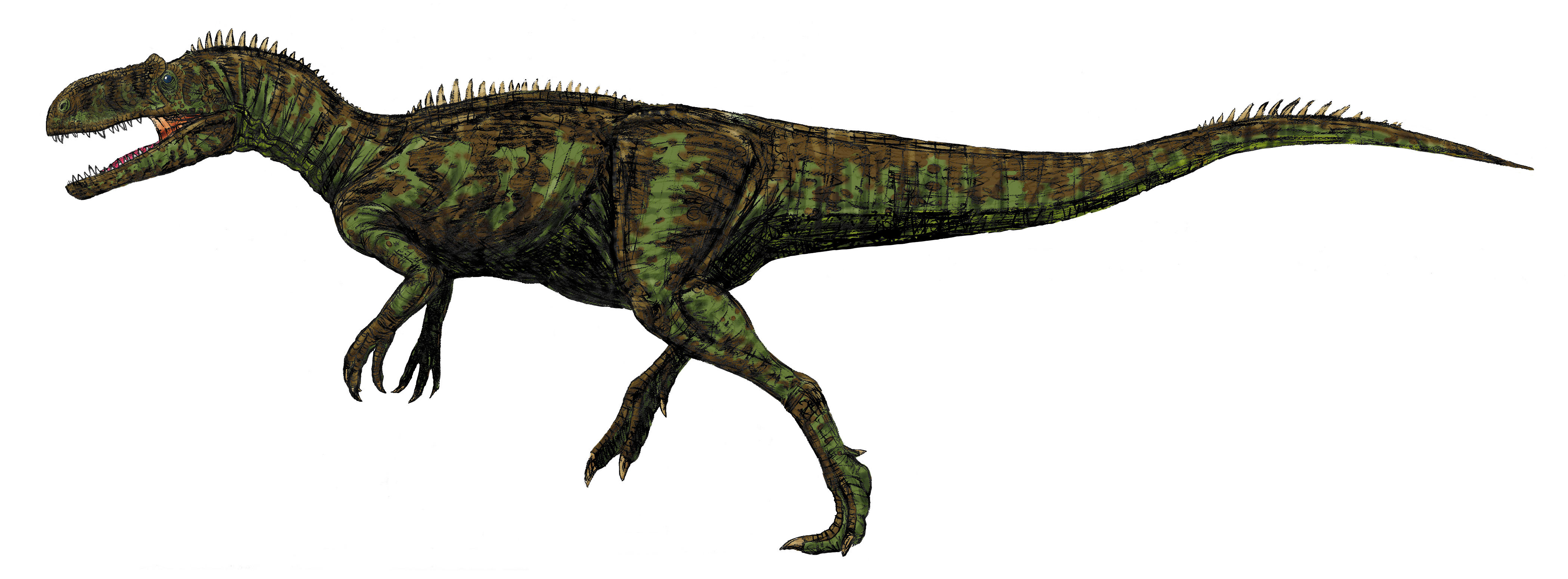|
Tangshang Formation
The Tangshang Formation is a Late Cretaceous Mesozoic geologic formation in China. Dinosaur and pterosaur remains diagnostic to the genus level are among the fossils that have been recovered from the formation. The formation has been dated around 92.9 million to 81.5 million years ago. Paleobiota of the Tangshang Formation See also * List of dinosaur-bearing rock formations ** List of stratigraphic units with few dinosaur genera This list of stratigraphic units with few non-avian dinosaur genera includes Mesozoic stratigraphic units of formation rank or higher that have produced dinosaur body fossils A fossil (from Classical Latin , ) is any preserved remains, i ... References Mesozoic Erathem of Asia {{China-geologic-formation-stub ... [...More Info...] [...Related Items...] OR: [Wikipedia] [Google] [Baidu] |
Geological Formation
A geological formation, or simply formation, is a body of rock having a consistent set of physical characteristics (lithology) that distinguishes it from adjacent bodies of rock, and which occupies a particular position in the layers of rock exposed in a geographical region (the stratigraphic column). It is the fundamental unit of lithostratigraphy, the study of strata or rock layers. A formation must be large enough that it can be mapped at the surface or traced in the subsurface. Formations are otherwise not defined by the thickness (geology), thickness of their rock strata, which can vary widely. They are usually, but not universally, tabular in form. They may consist of a single lithology (rock type), or of alternating beds of two or more lithologies, or even a heterogeneous mixture of lithologies, so long as this distinguishes them from adjacent bodies of rock. The concept of a geologic formation goes back to the beginnings of modern scientific geology. The term was used by ... [...More Info...] [...Related Items...] OR: [Wikipedia] [Google] [Baidu] |
Therizinosauroid
Therizinosaurs (once called segnosaurs) were large herbivorous theropod dinosaurs whose fossils have been found across the Early to Late Cretaceous deposits in Asia and North America. Various features of the forelimbs, skull and pelvis unite these finds as both theropods and maniraptorans, close relatives to birds. The name of the representative genus, ''Therizinosaurus'', is derived from the Greek (, 'to reap' or 'scythe')Translated paper and (, 'lizard'). The older representative, ''Segnosaurus'', is derived from the ('slow') and the Greek . History of research [...More Info...] [...Related Items...] OR: [Wikipedia] [Google] [Baidu] |
List Of Dinosaur-bearing Rock Formations
This list of dinosaur-bearing rock formations is a list of geologic formations in which dinosaur fossils have been documented. Containing body fossils * List of stratigraphic units with dinosaur body fossils ** List of stratigraphic units with few dinosaur genera ** List of stratigraphic units with indeterminate dinosaur fossils Containing trace fossils * List of stratigraphic units with dinosaur trace fossils ** List of stratigraphic units with dinosaur tracks *** List of stratigraphic units with ornithischian tracks *** List of stratigraphic units with sauropodomorph tracks *** List of stratigraphic units with theropod tracks See also * Lists of fossiliferous stratigraphic units * List of fossil sites * Mesozoic The Mesozoic Era ( ), also called the Age of Reptiles, the Age of Conifers, and colloquially as the Age of the Dinosaurs is the second-to-last era of Earth's geological history, lasting from about , comprising the Triassic, Jurassic and Creta ... {{DE ... [...More Info...] [...Related Items...] OR: [Wikipedia] [Google] [Baidu] |
Azhdarchid
Azhdarchidae (from the Persian word , , a dragon-like creature in Persian mythology) is a family of pterosaurs known primarily from the Late Cretaceous Period, though an isolated vertebra apparently from an azhdarchid is known from the Early Cretaceous as well (late Berriasian age, about 140 million years ago). Azhdarchids included some of the largest known flying animals of all time, but smaller cat-size members have also been found. Originally considered a sub-family of Pteranodontidae, Nesov (1984) named the Azhdarchinae to include the pterosaurs ''Azhdarcho'', ''Quetzalcoatlus'', and ''Titanopteryx'' (now known as ''Arambourgiania''). They were among the last known surviving members of the pterosaurs, and were a rather successful group with a worldwide distribution. By the time of the end-Cretaceous mass extinction, most pterosaur families except for the Azhdarchidae disappear from the fossil record, but recent studies indicate a wealth of pterosaurian fauna, including ptera ... [...More Info...] [...Related Items...] OR: [Wikipedia] [Google] [Baidu] |
Zhejiangopterus
''Zhejiangopterus'' is a genus of azhdarchid pterosaur known from one species, which lived in China during the late Cretaceous Period. The genus was named in 1994 by Chinese paleontologists Cai Zhengquan and Wei Feng. The type species is ''Zhejiangopterus linhaiensis''. The genus name refers to Zhejiang Province and a Latinized Greek ''pteron'', "wing". The specific name refers to the city of Linhai. Discovery In 1986 a young chalkstone quarry worker named Xu Chengfa, found a large fossil near the village of Aolicun in Linhai. Xu by letter informed the director of the Zhejiang Museum of Natural History at Hangzhou, Ming Hua, who from it understood the remains were those of an unknown pterosaur. Therefore, he sent a team consisting of the describers and Wu Weitang to investigate. They secured the fossil, instructing the local population to be alert for possible further finds. Xu himself managed to find three more specimens before being killed in an accident in 1988; another ... [...More Info...] [...Related Items...] OR: [Wikipedia] [Google] [Baidu] |
Avialan
Avialae ("bird wings") is a clade containing the only living dinosaurs, the birds. It is usually defined as all theropod dinosaurs more closely related to birds (Aves) than to deinonychosaurs, though alternative definitions are occasionally used (see below). ''Archaeopteryx lithographica'', from the late Jurassic Period Solnhofen Formation of Germany, is possibly the earliest known avialan which may have had the capability of powered flight, though it might have been a deinonychosaur instead. Several older (but non flight-capable) avialans are known from the late Jurassic Tiaojishan Formation of China, dated to about 160 million years ago. Definition Most researchers define Avialae as branch-based clade, though definitions vary. Many authors have used a definition similar to "all theropods closer to birds than to ''Deinonychus''."Weishampel, David B.; Dodson, Peter; Osmólska, Halszka (eds.) (2004). ''The Dinosauria'', Second Edition. University of California Press., 861 p ... [...More Info...] [...Related Items...] OR: [Wikipedia] [Google] [Baidu] |
Yandangornis
''Yandangornis'' is a genus of theropod, theropods (possibly Avialae, avialans) from the Late Cretaceous. It lived 81.5 mya (unit), million years ago in what is now China. The type species, ''Y. longicaudus'', was formally described by Cai and Zhou in 1999. The holotype specimen is a mostly complete skeleton in the collection of the Zhejiang Museum of Natural History, with accession number M1326. The fossil was discovered in 1986, near Linhai City in Zhejiang Province, China. It includes most of one complete skeleton. The genus was named after the Yandang Mountains, Yandang mountains. Description The specimen is small, roughly the size of ''Archaeopteryx'', with a total length around , of which 30.5 centimeters (1 foot) is tail. It is preserved in a seated position and visible from the ventral aspect. After ''Archaeopteryx'', ''Yandangornis'' was the second genus of primitive bird found preserving a long, bony tail, and this trait was responsible for the Specific name (zoology), ... [...More Info...] [...Related Items...] OR: [Wikipedia] [Google] [Baidu] |
Fangyan Formation
The Fangyan Formation is a Formation (geology), geologic formation in China (Dongyang). It is made up of mainly Conglomerate (geology), conglomerates. It preserves dinosaur fossils dating back to the Late Cretaceous. Paleofauna *''Dongyangosaurus sinensis'' References {{reflist Geologic formations of China ... [...More Info...] [...Related Items...] OR: [Wikipedia] [Google] [Baidu] |
Late Cretaceous
The Late Cretaceous (100.5–66 Ma) is the younger of two epochs into which the Cretaceous Period is divided in the geologic time scale. Rock strata from this epoch form the Upper Cretaceous Series. The Cretaceous is named after ''creta'', the Latin word for the white limestone known as chalk. The chalk of northern France and the white cliffs of south-eastern England date from the Cretaceous Period. Climate During the Late Cretaceous, the climate was warmer than present, although throughout the period a cooling trend is evident. The tropics became restricted to equatorial regions and northern latitudes experienced markedly more seasonal climatic conditions. Geography Due to plate tectonics, the Americas were gradually moving westward, causing the Atlantic Ocean to expand. The Western Interior Seaway divided North America into eastern and western halves; Appalachia and Laramidia. India maintained a northward course towards Asia. In the Southern Hemisphere, Australia a ... [...More Info...] [...Related Items...] OR: [Wikipedia] [Google] [Baidu] |
Chilantaisaurus
''Chilantaisaurus'' (" lizard") is a genus of large theropod dinosaur, possibly a neovenatorid or a primitive coelurosaur, from the Late Cretaceous Ulansuhai Formation of China (Turonian age, about 92 million years ago). The type species, ''C. tashuikouensis'', was described by Hu in 1964. Description ''Chilantaisaurus'' was a large theropod, estimated as weighing between and . In 2010, Brusatte et al. estimated it to weigh , based on femur length measurements. However, considering that greater femoral circumference indicates the greater capacity to withstand greater locomotor loads (not greater body mass), the 2020 study moderated the body mass of the holotype at . It is estimated to be around to long. Classification Hu considered ''Chilantaisaurus'' to be a carnosaur related to ''Allosaurus'', though some subsequent studies suggested that it may be a spinosauroid, possibly a primitive member of the spinosaurid family (Sereno, 1998; Chure, 2000; Rauhut, 2001) because ... [...More Info...] [...Related Items...] OR: [Wikipedia] [Google] [Baidu] |
Genus
Genus ( plural genera ) is a taxonomic rank used in the biological classification of living and fossil organisms as well as viruses. In the hierarchy of biological classification, genus comes above species and below family. In binomial nomenclature, the genus name forms the first part of the binomial species name for each species within the genus. :E.g. '' Panthera leo'' (lion) and '' Panthera onca'' (jaguar) are two species within the genus ''Panthera''. ''Panthera'' is a genus within the family Felidae. The composition of a genus is determined by taxonomists. The standards for genus classification are not strictly codified, so different authorities often produce different classifications for genera. There are some general practices used, however, including the idea that a newly defined genus should fulfill these three criteria to be descriptively useful: # monophyly – all descendants of an ancestral taxon are grouped together (i.e. phylogenetic analysis should c ... [...More Info...] [...Related Items...] OR: [Wikipedia] [Google] [Baidu] |




.jpg)



